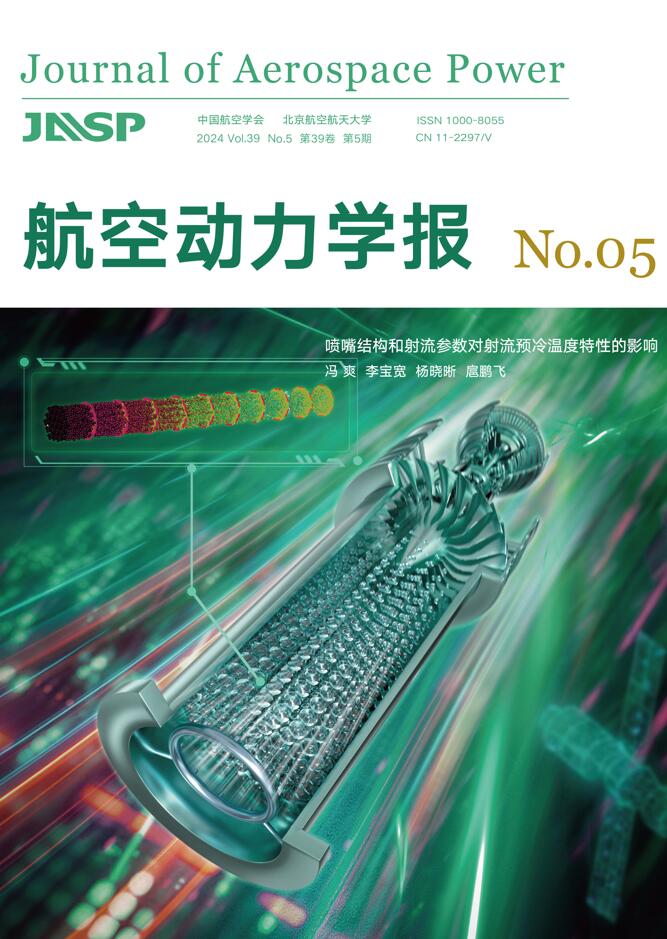Display Method:
2024, 39(8): 20220503.
doi: 10.13224/j.cnki.jasp.20220503
Abstract:
2024, 39(8): 20220071.
doi: 10.13224/j.cnki.jasp.20220071
Abstract:
2024, 39(8): 20220603.
doi: 10.13224/j.cnki.jasp.20220603
Abstract:
2024, 39(8): 20220608.
doi: 10.13224/j.cnki.jasp.20220608
Abstract:
2024, 39(8): 20230762.
doi: 10.13224/j.cnki.jasp.20230762
Abstract:
2024, 39(8): 20220604.
doi: 10.13224/j.cnki.jasp.20220604
Abstract:
2024, 39(8): 20220579.
doi: 10.13224/j.cnki.jasp.20220579
Abstract:
2024, 39(8): 20220073.
doi: 10.13224/j.cnki.jasp.20220073
Abstract:
2024, 39(8): 20220080.
doi: 10.13224/j.cnki.jasp.20220080
Abstract:
2024, 39(8): 20220496.
doi: 10.13224/j.cnki.jasp.20220496
Abstract:
2024, 39(8): 20220614.
doi: 10.13224/j.cnki.jasp.20220614
Abstract:
2024, 39(8): 20220588.
doi: 10.13224/j.cnki.jasp.20220588
Abstract:
2024, 39(8): 20220593.
doi: 10.13224/j.cnki.jasp.20220593
Abstract:
2024, 39(8): 20220555.
doi: 10.13224/j.cnki.jasp.20220555
Abstract:
2024, 39(8): 20220558.
doi: 10.13224/j.cnki.jasp.20220558
Abstract:
2024, 39(8): 20220067.
doi: 10.13224/j.cnki.jasp.20220067
Abstract:
2024, 39(8): 20220507.
doi: 10.13224/j.cnki.jasp.20220507
Abstract:
2024, 39(8): 20220564.
doi: 10.13224/j.cnki.jasp.20220564
Abstract:
2024, 39(8): 20220521.
doi: 10.13224/j.cnki.jasp.20220521
Abstract:
2024, 39(8): 20220512.
doi: 10.13224/j.cnki.jasp.20220512
Abstract:
2024, 39(8): 20220617.
doi: 10.13224/j.cnki.jasp.20220617
Abstract:
2024, 39(8): 20220533.
doi: 10.13224/j.cnki.jasp.20220533
Abstract:
2024, 39(8): 20220616.
doi: 10.13224/j.cnki.jasp.20220616
Abstract:
2024, 39(8): 20220506.
doi: 10.13224/j.cnki.jasp.20220506
Abstract:
2024, 39(8): 20220584.
doi: 10.13224/j.cnki.jasp.20220584
Abstract:
2024, 39(8): 20220078.
doi: 10.13224/j.cnki.jasp.20220078
Abstract:
2024, 39(8): 20220556.
doi: 10.13224/j.cnki.jasp.20220556
Abstract:
2024, 39(8): 20220561.
doi: 10.13224/j.cnki.jasp.20220561
Abstract:
2024, 39(8): 20220072.
doi: 10.13224/j.cnki.jasp.20220072
Abstract:
2024, 39(8): 20230310.
doi: 10.13224/j.cnki.jasp.20230310
Abstract:
2024, 39(8): 20220591.
doi: 10.13224/j.cnki.jasp.20220591
Abstract:
2024, 39(8): 20220594.
doi: 10.13224/j.cnki.jasp.20220594
Abstract:
2024, 39(8): 20220076.
doi: 10.13224/j.cnki.jasp.20220076
Abstract:
2024, 39(8): 20220574.
doi: 10.13224/j.cnki.jasp.20220574
Abstract:
2024, 39(8): 20220602.
doi: 10.13224/j.cnki.jasp.20220602
Abstract:
2024, 39(8): 20220516.
doi: 10.13224/j.cnki.jasp.20220516
Abstract:
Numerical analysis on performance of hydrodynamic-hydrostatic hybrid mechanical seals for turbopumps
2024, 39(8): 20220580.
doi: 10.13224/j.cnki.jasp.20220580
Abstract:
2024, 39(8): 20220202.
doi: 10.13224/j.cnki.jasp.20220202
Abstract:
2024, 39(8): 20220526.
doi: 10.13224/j.cnki.jasp.20220526
Abstract:
2024, 39(8): 20220568.
doi: 10.13224/j.cnki.jasp.20220568
Abstract:
2024, 39(8): 20230068.
doi: 10.13224/j.cnki.jasp.20230068
Abstract:
2024, 39(8): 20220576.
doi: 10.13224/j.cnki.jasp.20220576
Abstract:







